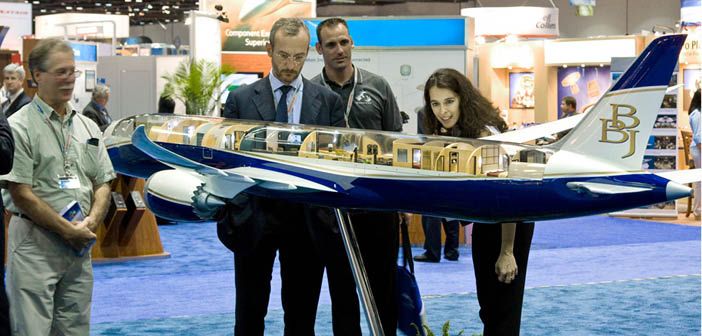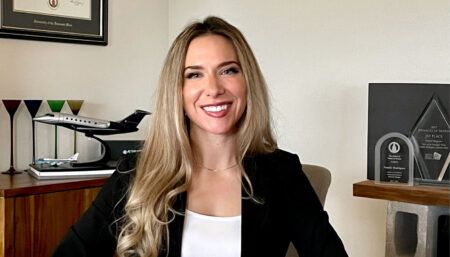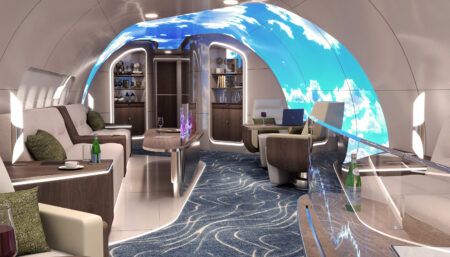Dan Ouweleen, president of PacMin, explains the intricacies of aircraft model-making
 How did Pacific Miniatures (PacMin) start out?
How did Pacific Miniatures (PacMin) start out?
In 2011 PacMin is celebrating its 65th anniversary. The company was started in 1946 by two Douglas Aircraft employees who responded to a demand from Boeing, Douglas and airlines at the time to depict the luxury and excitement of commercial air travel. PacMin developed cut-away models showing the interiors of the DC-6 and Boeing Stratocruiser. Back in 1946, very few people had flown commercially and the industry was anxious to show the experience that awaited them. Numerous desktop and exhibit models were also produced for marketing and sales campaigns.
With the growth of business aviation, it was a natural progression for PacMin to work with the likes of North American Aviation on the Sabreliner and Lockheed on the Jetstar. Today, the company works with all major business jet manufacturers. PacMin continues the tradition of developing detailed interior models of business jets and commercial aircraft.
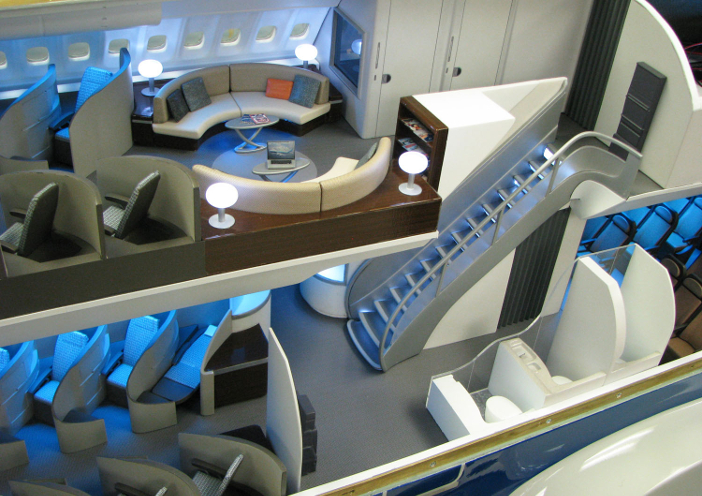 How do you set about a new project?
How do you set about a new project?
It all begins with an in-depth conversation with our client. It is very important that we understand what they are trying to communicate, who their audience is, and what brand messages are crucial and must be transmitted. Given how varied cut-away interior projects can be, budget and schedule requirements are also discussed. We then analyse the project from a technical, capacity and lead-time perspective, and develop a proposal.
 What processes and technologies are involved?
What processes and technologies are involved?
We depend on getting CAD data from the customer for interior seats and furniture, as well as lavatories, bedrooms and dining areas. To produce miniatures of the interior components, we use the CAD data for design parts that can be duplicated with rapid prototyping. If the same form, a seat for example, is repeated, we will develop moulds for casting parts.
We also get information on the exact colours and textures of fabrics for seats, carpet and side panels from the customer. We then carefully duplicate these characteristics accounting for the fact that we are producing the model in a much smaller scale than the real aircraft.
The aircraft exterior is usually moulded in fibreglass and polyurethane. It is carefully filled and sanded and spray painted with transport-grade paints. For finely detailed graphics, we have a silk-screen shop where we print water-slide decals.
In addition to all the technology, we rely on a dedicated team of craftspeople who are skilled in customising and model-making.
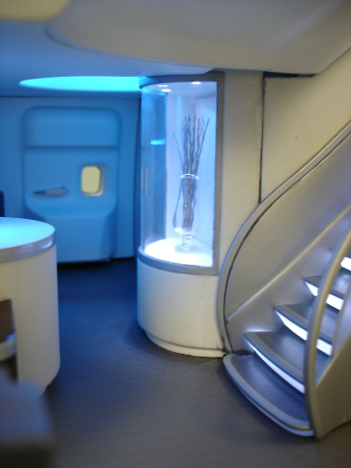 How long does the process take?
How long does the process take?
Assuming we get all the information on time and there are no changes in the process, it takes about 12 weeks to do a detailed interior for a large-scale model. We have the capacity to do about two detailed cut-away models a month. As for our desktop and exhibit models without interiors, we produce about 1,000 units per month.
How do you ensure accuracy?
To ensure the best and most accurate results, customer-supplied CAD works the best. This way we can scale it down accurately. We do still create interiors based on photos and three-view drawings with good results. Accurate interior colours and fabric samples provided by the client are also important.
What is the most difficult part?
I would say without a doubt that project management is the most challenging aspect, especially if there are changes or a very tight time schedule. Many of our customers need a model for an important event such as a tradeshow. To meet that date, we have to get started even if the customer has not decided on a final configuration.
 What skills are needed?
What skills are needed?
We employ a total of about 50 people in our facility in Fullerton, California, USA, all of whom have very specialised skills such as CAD design, rapid prototyping, graphics, assembly, painting and customising. They work not only on models with interior details, but also our other production projects as well. Our team has a can-do attitude and thrives when given a new challenge. I would characterise them as very passionate about their work and about aviation.
 How are PacMin’s models used?
How are PacMin’s models used?
PacMin models are primarily used as sales and marketing tools for aircraft manufacturers and aircraft operators. New aircraft reveals and tradeshows are key venues for models. They are also commonly used for customer presentations and contract signings as well as for display in customer’s lobbies. For example, Boeing commissioned a 1/20-scale 787 BBJ with residential interior for EBACE and NBAA. It still serves as a big draw to its stand.
We produced a beautiful G650 cutaway for Gulfstream that was displayed at the aircraft’s roll-out and subsequently on the tradeshow circuit. When the model is not travelling it may be on display in the customer’s headquarters.
Many completion centres design special interior packages and have a model made showing off their unique designs. These models reside in their offices and are a centrepiece for customer conversations. Sometimes PacMin models are included in aircraft sales contracts for customer marketing support. This provides them with a competitive advantage and delights the client. A beautiful interior model of a VIP’s business jet in his office serves as a great conversation piece and ongoing advertisement for the completion centre.
Generally our clients use PacMin when they are going through the design process for a new aircraft from initial concepts through development and testing and on to certification. And there have been more than a few designs that have been modified or abandoned after being created as a PacMin miniature. For example, when Teague Design developed the Dreamliner livery for Boeing’s 787, they first had us duplicate the design on a scale model before painting the real aircraft. They made some adjustments after evaluating the results, thereby ensuring a great outcome. We recently worked with them again on proving the new Boeing 737 Max exterior livery.
What are the biggest and most complex models PacMin has made?
We have been involved in models up to 24m long. Generally the interior models we do vary in length from 2-4m. We have incorporated exterior and interior lighting as well opening and closing luggage and passenger doors. We even engineered an electric operating passenger elevator on a Boeing 747 model for Greenpoint Technologies. We were the first to include multiple miniature flat-panel TV screens to depict entertainment centres. We have also duplicated some really amazing paint schemes, either real or proposed. These include designs with pearlescents, fades and whimsical decals.
 What are some of your most memorable projects?
What are some of your most memorable projects?
I appreciated the challenge HondaJet gave us when it commissioned a 4.5m model for NBAA 2007. The company is very strategic about its brand and marketing messages, which I respect and appreciate. It teamed us with a special effects company that we had not worked with before. The collaboration resulted in a model with rotating turbine blades, realistic strobes and position lights. The model was articulated in such a way that it emerged from a cloud created in the middle of HondaJet’s exhibit space. The company wanted us to capture the beauty of the aircraft emerging from and cruising above a cloud layer, and together, we did!


